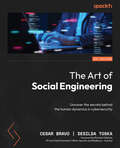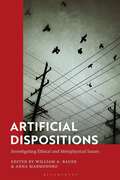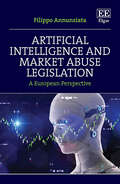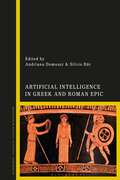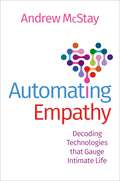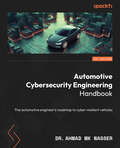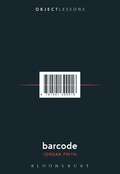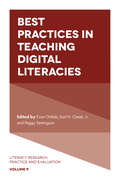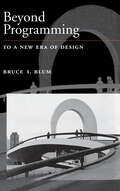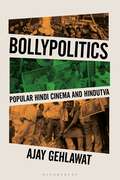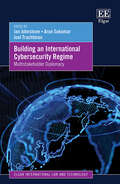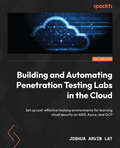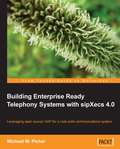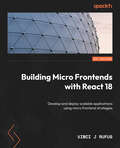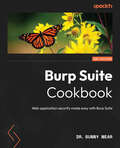- Table View
- List View
The Art of Social Engineering: Uncover the secrets behind the human dynamics in cybersecurity
by Cesar Bravo Desilda ToskaUnderstand psychology-driven social engineering, arm yourself with potent strategies, and mitigate threats to your organization and personal data with this all-encompassing guideKey FeaturesGain insights into the open source intelligence (OSINT) methods used by attackers to harvest dataUnderstand the evolving implications of social engineering on social networksImplement effective defensive strategies to mitigate the probability and impact of social engineering attacksPurchase of the print or Kindle book includes a free PDF eBookBook DescriptionSocial engineering is one of the most prevalent methods used by attackers to steal data and resources from individuals, companies, and even government entities. This book serves as a comprehensive guide to understanding social engineering attacks and how to protect against them. The Art of Social Engineering starts by giving you an overview of the current cyber threat landscape, explaining the psychological techniques involved in social engineering attacks, and then takes you through examples to demonstrate how to identify those attacks. You’ll learn the most intriguing psychological principles exploited by attackers, including influence, manipulation, rapport, persuasion, and empathy, and gain insights into how attackers leverage technology to enhance their attacks using fake logins, email impersonation, fake updates, and executing attacks through social media. This book will equip you with the skills to develop your own defensive strategy, including awareness campaigns, phishing campaigns, cybersecurity training, and a variety of tools and techniques. By the end of this social engineering book, you’ll be proficient in identifying cyberattacks and safeguarding against the ever-growing threat of social engineering with your defensive arsenal.What you will learnGrasp the psychological concepts and principles used in social engineering attacksDistinguish the different types of social engineering attacksExamine the impact of social engineering on social networksFind out how attackers leverage OSINT tools to perform more successful attacksWalk through the social engineering lifecycleGet a glimpse of the capabilities of Social Engineering Toolkit (SET)Who this book is forThis book is for cybersecurity enthusiasts, ethical hackers, penetration testers, IT administrators, cybersecurity analysts, or anyone concerned with cybersecurity, privacy, and risk management. It will serve as a valuable resource for managers, decision makers, and government officials to understand the impact and importance of social engineering and how to protect against this threat.
Artificial Dispositions: Investigating Ethical and Metaphysical Issues
We inhabit a world not only full of natural dispositions independent of human design, but also artificial dispositions created by our technological prowess. How do these dispositions, found in automation, computation, and artificial intelligence applications, differ metaphysically from their natural counterparts? This collection investigates artificial dispositions: what they are, the roles they play in artificial systems, and how they impact our understanding of the nature of reality, the structure of minds, and the ethics of emerging technologies. It is divided into four parts covering the following interconnected themes: (i) Artificial and Natural Dispositions, (ii) Artificial Systems and Their Dispositions, (iii) Agency, Mind, and Artificial Dispositions, and (iv) Artificial Moral Dispositions. This is a groundbreaking and thought-provoking resource for any student or scholar of philosophy of science, contemporary metaphysics, applied ethics, philosophy of mind, and philosophy of technology.
Artificial Era: Predictions, Problems, and Diversity in AI
by Gissel VelardePresenting a ground-breaking view of technology trends and their impact on our society, Artificial Era contributes to the current debate about the consequences of technological innovations. Alongside different viewpoints and statistics on the use of robots worldwide, productivity, and job displacement, Gissel Velarde identifies the particular problem of the lack of diversity in AI communities - and how that can exacerbate representation issues in employment, civil rights, gender, and education if no actions are taken. A timely, inciteful book which will be required reading for scholars and professionals working with AI and automation, and leaders in business and government interested in better understanding it and its effects on business and society.
Artificial Intelligence and Market Abuse Legislation: A European Perspective
by Filippo AnnunziataArtificial Intelligence and Market Abuse Legislation presents a wide-reaching interdisciplinary examination of the impact of AI on the EU Market Abuse Regulation (MAR).Assessing the principles and rules governing the MAR disclosure regime as well as the mechanisms of market manipulation, Filippo Annunziata examines the important role of AI systems in the prompt disclosure of inside trading information. The author analyses the threat of breaches in disclosure protocol posed by technological malfunctions, as well as the opportunities and drawbacks presented by market manipulation in algorithmic trading. This incisive book goes on to argue for greater trading venue monitoring and the installation of adequate systems that can analyse, predict and thus anticipate situations that result in market manipulation.A state-of-the-art study analysing the impact of AI in relation to MAR from both a disclosure regime and an algorithmic trading perspective, this book will be critical reading for researchers interested in the law on AI, and in the regulation of global financial trading and market regulation. It will also be of interest to practitioners and policymakers working in the global financial sector.
Artificial Intelligence in Greek and Roman Epic
This is the first scholarly exploration of concepts and representations of Artificial Intelligence in ancient Greek and Roman epic, including their reception in later literature and culture. Contributors look at how Hesiod, Homer, Apollonius of Rhodes, Moschus, Ovid and Valerius Flaccus crafted the first literary concepts concerned with automata and the quest for artificial life, as well as technological intervention improving human life.Parts one and two consider, respectively, archaic Greek, and Hellenistic and Roman, epics. Contributors explore the representations of Pandora in Hesiod, and Homeric automata such as Hephaestus' wheeled tripods, the Phaeacian king Alcinous' golden and silver guard dogs, and even the Trojan Horse. Later examples cover Artificial Intelligence and automation (including Talos) in the Argonautica of Apollonius and Valerius Flaccus, and Pygmalion's ivory woman in Ovid's Metamorphoses. Part three underlines how these concepts benefit from analysis of the ekphrasis device, within which they often feature. These chapters investigate the cyborg potential of the epic hero and the literary implications of ancient technology. Moving into contemporary examples, the final chapters consider the reception of ancient literary Artificial Intelligence in contemporary film and literature, such as the Czech science-fiction epic Starvoyage, or Small Cosmic Odyssey by Jan Kr?esadlo (1995) and the British science-fiction novel The Holy Machine by Chris Beckett (2004).
Automating Empathy: Decoding Technologies that Gauge Intimate Life
by Andrew McStayThis is an open access title. It is made available under a Creative Commons Attribution-Non Commercial-No Derivatives 4.0 International license. It is available to read and download as a PDF version on the Oxford Academic platform. We live in a world where artificial intelligence and intensive use of personal data has become normalized. Companies across the world are developing and launching technologies to infer and interact with emotions, mental states, and human conditions. However, the methods and means of mediating information about people and their emotional states are incomplete and problematic. Automating Empathy offers a critical exploration of technologies that sense intimate dimensions of human life and the modern ethical questions raised by attempts to perform and simulate empathy. It traces the ascendance of empathic technologies from their origins in physiognomy and pathognomy to the modern day and explores technologies in nations with non-Western ethical histories and approaches to emotion, such as Japan. The book examines applications of empathic technologies across sectors such as education, policing, and transportation, and considers key questions of everyday use such as the integration of human-state sensing in mixed reality, the use of neurotechnologies, and the moral limits of using data gleaned through automated empathy. Ultimately, Automating Empathy outlines the key principles necessary to usher in a future where automated empathy can serve and do good. Drawing insights across ethics, philosophy, and policy, Automating Empathy argues for a pluralistic reconceptualization of empathic technologies to better reflect the intimate dimensions of human life.
Automotive Cybersecurity Engineering Handbook: The automotive engineer's roadmap to cyber-resilient vehicles
by Dr. Ahmad NasserAccelerate your journey of securing safety-critical automotive systems through practical and standard-compliant methodsKey FeaturesUnderstand how automotive systems can become vulnerable to cyberattacksApply security controls to all vehicle layers for mitigating cybersecurity risksFind out how systematic secure engineering mitigates cyber risks while ensuring compliancePurchase of the print or Kindle book includes a free PDF eBookBook DescriptionReplete with exciting challenges, automotive cybersecurity is an emerging domain, and cybersecurity is a foundational enabler for current and future connected vehicle features. This book addresses the severe talent shortage faced by the industry in meeting the demand for building cyber-resilient systems by consolidating practical topics on securing automotive systems to help automotive engineers gain a competitive edge. The book begins by exploring present and future automotive vehicle architectures, along with relevant threats and the skills essential to addressing them. You’ll then explore cybersecurity engineering methods, focusing on compliance with existing automotive standards while making the process advantageous. The chapters are designed in a way to help you with both the theory and practice of building secure systems while considering the cost, time, and resource limitations of automotive engineering. The concluding chapters take a practical approach to threat modeling automotive systems and teach you how to implement security controls across different vehicle architecture layers. By the end of this book, you'll have learned effective methods of handling cybersecurity risks in any automotive product, from single libraries to entire vehicle architectures.What you will learnGet to grips with present and future vehicle networking technologiesExplore basic concepts for securing automotive systemsDiscover diverse approaches to threat modeling of systemsConduct efficient threat analysis and risk assessment (TARA) for automotive systems using best practicesGain a comprehensive understanding of ISO/SAE 21434's cybersecurity engineering approachImplement cybersecurity controls for all vehicle life cyclesMaster ECU-level cybersecurity controlsWho this book is forIf you’re an engineer wondering where to get started in the field of automotive cybersecurity or trying to understand which security standards apply to your product and how, then this is the book for you. This book is also for experienced engineers looking for a practical approach to automotive cybersecurity development that can be achieved within a reasonable time frame while leveraging established safety and quality processes. Familiarity with basic automotive development processes across the V-model will help you make the most of this book.
Automotive Cybersecurity Engineering Handbook: The automotive engineer's roadmap to cyber-resilient vehicles
by Dr. Ahmad NasserAccelerate your journey of securing safety-critical automotive systems through practical and standard-compliant methodsKey FeaturesUnderstand how automotive systems can become vulnerable to cyberattacksApply security controls to all vehicle layers for mitigating cybersecurity risksFind out how systematic secure engineering mitigates cyber risks while ensuring compliancePurchase of the print or Kindle book includes a free PDF eBookBook DescriptionReplete with exciting challenges, automotive cybersecurity is an emerging domain, and cybersecurity is a foundational enabler for current and future connected vehicle features. This book addresses the severe talent shortage faced by the industry in meeting the demand for building cyber-resilient systems by consolidating practical topics on securing automotive systems to help automotive engineers gain a competitive edge. The book begins by exploring present and future automotive vehicle architectures, along with relevant threats and the skills essential to addressing them. You’ll then explore cybersecurity engineering methods, focusing on compliance with existing automotive standards while making the process advantageous. The chapters are designed in a way to help you with both the theory and practice of building secure systems while considering the cost, time, and resource limitations of automotive engineering. The concluding chapters take a practical approach to threat modeling automotive systems and teach you how to implement security controls across different vehicle architecture layers. By the end of this book, you'll have learned effective methods of handling cybersecurity risks in any automotive product, from single libraries to entire vehicle architectures.What you will learnGet to grips with present and future vehicle networking technologiesExplore basic concepts for securing automotive systemsDiscover diverse approaches to threat modeling of systemsConduct efficient threat analysis and risk assessment (TARA) for automotive systems using best practicesGain a comprehensive understanding of ISO/SAE 21434's cybersecurity engineering approachImplement cybersecurity controls for all vehicle life cyclesMaster ECU-level cybersecurity controlsWho this book is forIf you’re an engineer wondering where to get started in the field of automotive cybersecurity or trying to understand which security standards apply to your product and how, then this is the book for you. This book is also for experienced engineers looking for a practical approach to automotive cybersecurity development that can be achieved within a reasonable time frame while leveraging established safety and quality processes. Familiarity with basic automotive development processes across the V-model will help you make the most of this book.
Barcode (Object Lessons)
by Dr. Jordan FrithObject Lessons is a series of short, beautifully designed books about the hidden lives of ordinary things.Barcodes are about as ordinary as an object can be. Billions of them are scanned each day and they impact everything from how we shop to how we travel to how the global economy is managed. But few people likely give them more than a second thought. In a way, the barcode's ordinariness is the ultimate symbol of its success.However, behind the mundanity of the barcode lies an important history. Barcodes bridged the gap between physical objects and digital databases and paved the way for the contemporary Internet of Things, the idea to connect all devices to the web. They were highly controversial at points, protested by consumer groups and labor unions, and used as a symbol of dystopian capitalism and surveillance in science fiction and art installations. This book tells the story of the barcode's complicated history and examines how an object so crucial to so many parts of our lives became more ignored and more ordinary as it spread throughout the world.Object Lessons is published in partnership with an essay series in The Atlantic.
Bayesian Analysis with Python: A practical guide to probabilistic modeling
by Osvaldo MartinLearn the fundamentals of Bayesian modeling using state-of-the-art Python libraries, such as PyMC, ArviZ, Bambi, and more, guided by an experienced Bayesian modeler who contributes to these librariesKey FeaturesConduct Bayesian data analysis with step-by-step guidanceGain insight into a modern, practical, and computational approach to Bayesian statistical modelingEnhance your learning with best practices through sample problems and practice exercisesPurchase of the print or Kindle book includes a free PDF eBook.Book DescriptionThe third edition of Bayesian Analysis with Python serves as an introduction to the main concepts of applied Bayesian modeling using PyMC, a state-of-the-art probabilistic programming library, and other libraries that support and facilitate modeling like ArviZ, for exploratory analysis of Bayesian models; Bambi, for flexible and easy hierarchical linear modeling; PreliZ, for prior elicitation; PyMC-BART, for flexible non-parametric regression; and Kulprit, for variable selection. In this updated edition, a brief and conceptual introduction to probability theory enhances your learning journey by introducing new topics like Bayesian additive regression trees (BART), featuring updated examples. Refined explanations, informed by feedback and experience from previous editions, underscore the book's emphasis on Bayesian statistics. You will explore various models, including hierarchical models, generalized linear models for regression and classification, mixture models, Gaussian processes, and BART, using synthetic and real datasets. By the end of this book, you will possess a functional understanding of probabilistic modeling, enabling you to design and implement Bayesian models for your data science challenges. You'll be well-prepared to delve into more advanced material or specialized statistical modeling if the need arises.What you will learnBuild probabilistic models using PyMC and BambiAnalyze and interpret probabilistic models with ArviZAcquire the skills to sanity-check models and modify them if necessaryBuild better models with prior and posterior predictive checksLearn the advantages and caveats of hierarchical modelsCompare models and choose between alternative onesInterpret results and apply your knowledge to real-world problemsExplore common models from a unified probabilistic perspectiveApply the Bayesian framework's flexibility for probabilistic thinkingWho this book is forIf you are a student, data scientist, researcher, or developer looking to get started with Bayesian data analysis and probabilistic programming, this book is for you. The book is introductory, so no previous statistical knowledge is required, although some experience in using Python and scientific libraries like NumPy is expected.
Best Practices in Teaching Digital Literacies (Literacy Research, Practice and Evaluation #9)
by Evan Ortlieb Earl H. Cheek Jr. Peggy SemingsonThe almost universal reliance upon digital tools for social, academic, and career development will only become more pronounced in the years to come. Teacher education programs remain ill-equipped to adequately prepare educators with the pedagogies needed to foster digital literacies. What is needed is a set of best practices towards teaching digital literacies so that teachers can better meet the emerging needs of their students in today’s classrooms. Where should teachers begin? What are the essentials of digital literacies within K-12 contexts? And how might we reimagine teacher education programs to optimally prepare teachers for working with technologically connected youth, whose literacies are more complex, interconnected, and diverse than ever? This volume provides a practical framework for teacher education programs to develop K-12 students’ digital literacies. It offers a set of best practices in teaching digital literacies that promote access to research-based pedagogies for immediate implementation in classrooms.
Bollypolitics: Popular Hindi Cinema and Hindutva (World Cinema)
by Ajay GehlawatThis book provides an in-depth exploration of the evolving landscape of Bollywood cinema in response to recent socio-political changes in India, including a surge in sectarian violence and the ascent of Hindutva, or Hindu nationalism, under Prime Minister Narendra Modi's leadership. Through a comprehensive analysis of prominent filmmakers and actors like Sanjay Leela Bhansali, Kangana Ranaut, Akshay Kumar, and Anupam Kher, Ajay Gehlawat investigates the extent to which their recent works align with key tenets of the Hindutva movement. He scrutinizes the growing influence of the Bharatiya Janata Party (BJP) on film production, manifesting in collaborations covering diverse themes, from Modi's Clean India initiative to the nation's space exploration endeavors and grand historical epics such as Padmaavat (2018) and Manikarnika (2019) that seek to reshape Indian history in line with Hindutva ideology.Gehlawat goes on to dissect smaller budget films like Article 15 (2019) and Shubh Mangal Zyada Saavdhan (2020), which tackle pressing social issues like caste-based violence and homophobia exacerbated by the surge in right-wing extremism in India. In doing so, he elucidates the profound and far-reaching impact of Hindutva ideology on Indian cinematic narratives and aesthetics, while also considering the broader implications for Indian society as a whole.
British Commercial Computer Digest: Pergamon Computer Data Series
by Sam StuartBritish Commercial Computer Digest, Eleventh Edition lists the current computers available in Britain including the peripheral equipments used either on-line or off-line. It also gives information on manufacturers and selling organizations of the listed computers. This book also presents a table of memory storage capacity and types of the computers, as well as computers installed in Great Britain and their users. Lastly, lists of all world-wide known computers with number installed are also provided. This book gives sensible guidance on the computers in Great Britain, viewed through professional eyes, under increasingly complex conditions.
Build Your Own Programming Language: A developer's comprehensive guide to crafting, compiling, and implementing programming languages
by Clinton L. JefferyEmbark on a journey through essential components of language design, compiler construction, preprocessors, transpilers, and runtime systems in this second edition, authored by the creator of the Unicon programming language. Purchase of the print or Kindle book includes a free PDF eBookKey FeaturesSolve pain points in your application domain by building a custom programming languageLearn how to create parsers, code generators, semantic analyzers, and interpretersTarget bytecode, native code, and preprocess or transpile code into another high-level languageBook DescriptionThere are many reasons to build a programming language: out of necessity, as a learning exercise, or just for fun. Whatever your reasons, this book gives you the tools to succeed. You’ll build the frontend of a compiler for your language with a lexical analyzer and parser, including the handling of parse errors. Then you’ll explore a series of syntax tree traversals before looking at code generation for a bytecode virtual machine or native code. In this edition, a new chapter has been added to assist you in comprehending the nuances and distinctions between preprocessors and transpilers. Code examples have been modernized, expanded, and rigorously tested, and all content has undergone thorough refreshing. You’ll learn to implement code generation techniques using practical examples, including the Unicon Preprocessor and transpiling Jzero code to Unicon. You'll move to domain-specific language features and learn to create them as built-in operators and functions. You’ll also cover garbage collection. Dr. Jeffery’s experiences building the Unicon language are used to add context to the concepts, and relevant examples are provided in both Unicon and Java so that you can follow along in your language of choice. By the end of this book, you'll be able to build and deploy your own domain-specific language.What you will learnAnalyze requirements for your language and design syntax and semantics.Write grammar rules for common expressions and control structures.Build a scanner to read source code and generate a parser to check syntax.Implement syntax-coloring for your code in IDEs like VS Code.Write tree traversals and insert information into the syntax tree.Implement a bytecode interpreter and run bytecode from your compiler.Write native code and run it after assembling and linking using system tools.Preprocess and transpile code into another high-level languageWho this book is forThis book is for software developers interested in the idea of inventing their own language or developing a domain-specific language. Computer science students taking compiler design or construction courses will also find this book highly useful as a practical guide to language implementation to supplement more theoretical textbooks. Intermediate or better proficiency in Java or C++ programming languages (or another high-level programming language) is assumed.
Building an International Cybersecurity Regime: Multistakeholder Diplomacy (Elgar International Law and Technology series)
Providing a much-needed study on cybersecurity regime building, this comprehensive book is a detailed analysis of cybersecurity norm-making processes and country positions, through the lens of multi-stakeholder diplomacy. Multidisciplinary and multinational scholars and practitioners use insights drawn from high-level discussion groups to provide a rigorous analysis of how major cyber powers view multi-stakeholder diplomacy.Looking at how past cybersecurity initiatives and multi-stakeholder negotiations in other fields illuminate its dynamics, this book will help put states' approaches towards multi-stakeholder cyber diplomacy into perspective, and frame the role of private actors in cybersecurity regime building. Evaluating the most promising institutional arrangements and mechanisms for implementing cybersecurity, this book combines top-down analyses relevant to the design of international cybersecurity regimes with bottom-up case studies, tracing the approaches of important states towards multi-stakeholder participation in cyber diplomacy.With a wealth of policy-relevant findings, this book will be welcomed by practitioners and scholars of international law, international organization and international cybersecurity as well as multi-stakeholder governance and multilateral regimes. Policymakers and diplomats involved in international cybersecurity processes will also benefit from its cutting-edge comparative analysis of the approaches of key cyber powers.
Building and Automating Penetration Testing Labs in the Cloud: Set up cost-effective hacking environments for learning cloud security on AWS, Azure, and GCP
by Joshua Arvin LatTake your penetration testing career to the next level by discovering how to set up and exploit cost-effective hacking lab environments on AWS, Azure, and GCPKey FeaturesExplore strategies for managing the complexity, cost, and security of running labs in the cloudUnlock the power of infrastructure as code and generative AI when building complex lab environmentsLearn how to build pentesting labs that mimic modern environments on AWS, Azure, and GCPPurchase of the print or Kindle book includes a free PDF eBookBook DescriptionThe significant increase in the number of cloud-related threats and issues has led to a surge in the demand for cloud security professionals. This book will help you set up vulnerable-by-design environments in the cloud to minimize the risks involved while learning all about cloud penetration testing and ethical hacking. This step-by-step guide begins by helping you design and build penetration testing labs that mimic modern cloud environments running on AWS, Azure, and Google Cloud Platform (GCP). Next, you’ll find out how to use infrastructure as code (IaC) solutions to manage a variety of lab environments in the cloud. As you advance, you’ll discover how generative AI tools, such as ChatGPT, can be leveraged to accelerate the preparation of IaC templates and configurations. You’ll also learn how to validate vulnerabilities by exploiting misconfigurations and vulnerabilities using various penetration testing tools and techniques. Finally, you’ll explore several practical strategies for managing the complexity, cost, and risks involved when dealing with penetration testing lab environments in the cloud. By the end of this penetration testing book, you’ll be able to design and build cost-effective vulnerable cloud lab environments where you can experiment and practice different types of attacks and penetration testing techniques.What you will learnBuild vulnerable-by-design labs that mimic modern cloud environmentsFind out how to manage the risks associated with cloud lab environmentsUse infrastructure as code to automate lab infrastructure deploymentsValidate vulnerabilities present in penetration testing labsFind out how to manage the costs of running labs on AWS, Azure, and GCPSet up IAM privilege escalation labs for advanced penetration testingUse generative AI tools to generate infrastructure as code templatesImport the Kali Linux Generic Cloud Image to the cloud with easeWho this book is forThis book is for security engineers, cloud engineers, and aspiring security professionals who want to learn more about penetration testing and cloud security. Other tech professionals working on advancing their career in cloud security who want to learn how to manage the complexity, costs, and risks associated with building and managing hacking lab environments in the cloud will find this book useful.
Building Enterprise Ready Telephony Systems with sipXecs 4.0
by Michael W. PicherThis book was written to be a step by step approach to building a communications system for any organization. Care was taken to clearly illustrate with diagrams and screen shots all of the steps and concepts along the way. This book is written for network engineers who have been asked to deploy and maintain communications systems for their organizations.
Building Full Stack DeFi Applications: A practical guide to creating your own decentralized finance projects on blockchain
by Samuel ZhouTake your blockchain and Web3 development skills to the next level by building real-world full-stack DeFi applications with Solidity and JavaScriptKey FeaturesGain the knowledge you need to start implementing DeFi principles in practiceLearn how to build full-stack real-world DeFi products from scratch with step-by-step instructionsLeverage tools like Hardhat, Ethers.js, Node.js, React.js, Solidity, and Web3 for effective DeFi application developmentPurchase of the print or Kindle book includes a free PDF eBookBook DescriptionEnter the world of Decentralized Finance (DeFi) with Building Full Stack DeFi Applications. Understand how this blockchain-based financial technology, designed to manage crypto assets, runs independently without centralized financial institutions like banks and brokerages, eliminating the fees that banks and other financial companies charge for using their services. This book will show you how DeFi solutions are built with smart contracts running on blockchains and how they allow users to gain and earn crypto assets based on the trust of the smart contracts. This book uncovers the inner workings of DeFi by guiding you through the mathematical foundations and teaching you how to build real-world DeFi products with Solidity and JavaScript. As you progress through the chapters, you’ll learn how to implement smart contracts of liquidity pools to trade cryptocurrencies and implement staking, including farming features that allow users to earn. You’ll also find out how to create asset pools that allow users to lend and borrow cryptocurrencies and generate interest. Additionally, you’ll discover how to use Web3 libraries to build the frontend of DeFi products. By the end of this book, you’ll will be well acquainted with popular tools, libraries, and design patterns for implementing a full-stack DeFi application with Web3 and Solidity.What you will learnUnderstand the key concepts and principles of DeFi and how it worksGet to grips with smart contract development to solve complex problemsBuild your experience in designing, building, and deploying Web3 applicationsImplement liquidity pools and swapping features for seamless crypto exchangesDevelop staking and farming features for DeFi applicationsCreate smart contracts for crypto loans integrated with Web3 librariesWho this book is forIf you are a blockchain developer experienced in Web3 and Solidity development, or anyone interested in learning about blockchain and DeFi technologies, this book is for you. Product managers, executives, and other management professionals looking to start or delve into a DeFi project will also benefit from this book, as will developers and architects with basic blockchain knowledge who want to advance their skills in building full-stack DeFi products. Experience with Solidity, JavaScript, and Web3 will help you get the most out of this book.
Building Micro Frontends with React 18: Develop and deploy scalable applications using micro frontend strategies
by Vinci J RufusBecome a full life cycle developer by not only learning how to build micro frontends but also deploying and managing them efficiently in a cloud-native environmentKey FeaturesGo through strategies for building and deploying production-grade micro frontends on the cloudExplore the right choice and guiding principles to build different micro frontend patternsLearn how to use React the right way to build and deploy micro frontends with this step-by-step guidePurchase of the print or Kindle book includes a free PDF eBookBook DescriptionAlthough deservedly popular and highly performant tools for building modern web applications, React and single-page applications (SPAs) become more and more sluggish as your applications and teams grow. To solve this problem, many large web apps have started to break down monolith SPAs into independently deployable smaller apps and components—a pattern called micro frontends. But micro frontends aren't a perfect solution, but rather a double-edged sword. This book teaches you how to architect and build them with the right principles to reap all the benefits without the pitfalls. This book will take you through two patterns of building micro frontends, the multi-SPA pattern and the micro apps pattern. You’ll find out which patterns to use and when, as well as take a look at the nuances of deploying these micro frontends using cloud-native technologies such as Kubernetes and Firebase. With the help of this book, you’ll gain an in-depth understanding of state management, solving problems with routing, and deployment strategies between the different micro frontends. By the end of this book, you’ll have learned how to design and build a React-based micro frontend application using module federation and deploy it to the cloud efficiently.What you will learnDiscover two primary patterns for building micro frontendsExplore how to set up monorepos for efficient team collaborationDeal with complexities such as routing and sharing state between different micro frontendsUnderstand how module federation works and use it to build micro frontendsFind out how to deploy micro frontends to cloud platformsFigure out how to build the right development experience for teamsWho this book is forThis book is for intermediate- to advanced-level developers with a working knowledge of React and web application development with JavaScript and TypeScript. Knowledge of concepts like client-side and server-side rendering, React, NodeJS, Webpack, and the basics of Kubernetes and serverless computing is desirable, but not necessary.
Building Your Own JavaScript Framework: Architect extensible and reusable framework systems
by Vlad FilippovLearn how to craft elegant and well-structured software frameworks in a variety of JavaScript environments with this handy guideKey FeaturesExplore the gateway to the constantly evolving world of JavaScript frameworksNavigate the JavaScript development landscape and discover crucial software architecture patternsBuild your own framework for a variety of work-related projectsPurchase of the print or Kindle book includes a free PDF eBookBook DescriptionJavaScript frameworks play an essential role in web application development; however, no single framework works perfectly for all projects. This book will help you understand existing projects, design new software architecture, and maintain projects as they grow. You’ll go through software architecture principles with JavaScript, along with a guided example of structuring your project and maintenance guidance. This book covers framework planning aspects, enabling you to identify key stakeholders, understand JavaScript API design, and leverage complex abstraction. The second part of the book takes a practical programming approach to building your own framework by showing you how to structure modules and interfaces. As you advance, you’ll discover how to develop data-binding components, work with JavaScript APIs, and much more. While writing a framework is half the job, continuing to develop it requires effort from everyone involved. The concluding chapters help to achieve this by teaching you the crucial aspects of software maintenance and highlighting the constants of framework development. By the end of this book, you’ll have gained a clear understanding of the JavaScript framework landscape, along with the ability to build frameworks for your use cases.What you will learnExpand your knowledge of JavaScript frameworks within different runtimes and ecosystemsGet to grips with the technical aspects of structuring framework abstractions in JavaScriptGain an understanding of common patterns across various existing frameworksDiscover the usage of existing tooling such as TypeScript and GraphQLConfigure performance tests for your project and track down bottlenecks in the code baseUnderstand how JavaScript and the web evolve and what these systems will look like in the coming yearsWho this book is forIf you’re a JavaScript novice or an expert who wants to explore the world of JavaScript frameworks, this book is for you. This book introduces you to the history of frontend frameworks and guides you through the creation of your own framework. The chapters are designed to help developers build large projects for their full-time jobs and programmers who want to create open-source projects. A clear understanding of the JavaScript programming language as well as experience with existing software frameworks are all prerequisites.
Burp Suite Cookbook: Web application security made easy with Burp Suite
by Dr. Sunny WearFind and fix security vulnerabilities in your web applications with Burp SuiteKey FeaturesSet up and optimize Burp Suite to maximize its effectiveness in web application security testingExplore how Burp Suite can be used to execute various OWASP test casesGet to grips with the essential features and functionalities of Burp SuitePurchase of the print or Kindle book includes a free PDF eBookBook DescriptionWith its many features, easy-to-use interface, and fl exibility, Burp Suite is the top choice for professionals looking to strengthen web application and API security. This book off ers solutions to challenges related to identifying, testing, and exploiting vulnerabilities in web applications and APIs. It provides guidance on identifying security weaknesses in diverse environments by using diff erent test cases. Once you’ve learned how to confi gure Burp Suite, the book will demonstrate the eff ective utilization of its tools, such as Live tasks, Scanner, Intruder, Repeater, and Decoder, enabling you to evaluate the security vulnerability of target applications. Additionally, you’ll explore various Burp extensions and the latest features of Burp Suite, including DOM Invader. By the end of this book, you’ll have acquired the skills needed to confi dently use Burp Suite to conduct comprehensive security assessments of web applications and APIs.What you will learnPerform a wide range of tests, including authentication, authorization, business logic, data validation, and client-side attacksUse Burp Suite to execute OWASP test cases focused on session managementConduct Server-Side Request Forgery (SSRF) attacks with Burp SuiteExecute XML External Entity (XXE) attacks and perform Remote Code Execution (RCE) using Burp Suite’s functionalitiesUse Burp to help determine security posture of applications using GraphQLPerform various attacks against JSON Web Tokens (JWTs)Who this book is forIf you are a beginner- or intermediate-level web security enthusiast, penetration tester, or security consultant preparing to test the security posture of your applications and APIs, this is the book for you.
Business Process Automation with Salesforce Flows: Transform business processes with Salesforce Flows to deliver unmatched user experiences
by Srini MunagavalasaCreate seamless and structured workflows that can streamline complicated business processes with this comprehensive BPA bookKey FeaturesExplore business processes for automation to add value for your business usersAnalyze, evaluate, and devise effective ways to implement automation through Salesforce FlowsBecome an expert in flow orchestration and compose complex business processes using real-world examples, tips, and tricksPurchase of the print or Kindle book includes a free PDF eBookBook DescriptionThe low adoption of most IT projects often stems from a lack of business process automation. While business users get the functionality they need, the excessive manual steps involved in execution impede efficiency. Business Process Automation with Salesforce Flows will address this issue by helping you recognize the need for automation and guiding you through automating such processes. This book starts by quickly exploring various aspects of process automation using Salesforce Flows, covering flow nuts and bolts, flow structure, flow execution order, and different types of flows, as well as troubleshooting techniques to manage your processes using the Flow Builder tool. You’ll then become acquainted with the Flow Orchestration tool, which enables you to compose and orchestrate complex business processes. Through real-world scenarios, you’ll learn how to effectively automate business processes, follow the end-to-end business process flow, automate it using flow orchestration, and learn how to demystify and simplify business process automation. By the end of this book, you’ll be proficient in seamlessly automating your business processes without any hassle.What you will learnGain insights into gathering business requirements and identifying automation needsIdentify opportunities for improving business process flowsTranslate critical steps in the business process flow and automate them using Flow BuilderIdentify different types of Salesforce Flows tailored to various scenariosOptimize and troubleshoot Salesforce Flows for increased efficiencyDiscover ways to implement complex business process automation through flow orchestrationWho this book is forThis book is for system administrators, technical team members, and business analysts with a solid understanding of the Salesforce CRM software who want to effectively automate business processes using Salesforce Flows. Administrative-level Salesforce experience, along with some technical experience working with automation tools like Workflow, Process Builder, and Flows, will facilitate a better comprehension of the concepts covered in this book.
Cambridge International AS Level Information Technology Student's Book Second Edition
by Graham Brown Brian SargentOur AS Level student book is endorsed by Cambridge International Education to support the full syllabus for examination from 2025.Develop theoretical and practical IT skills with this comprehensive Student's Book written by experienced authors and examiners specially for the updated Cambridge International Education AS Level Information Technology syllabus (9626).- Improve understanding of concepts and terminology with clear explanations, labelled illustrations, photographs, diagrams, plus a glossary of key terms- Develop theoretical and practical skills with a range of exercises (multi choice through to discussion type questions), exam-style questions, step-by-step instructions and example answers that all ensure skills are developed alongside knowledge- Follow a structured route through the course with in-depth coverage of the full syllabusAlso available in the series:Cambridge International AS Level Information Technology Student Book eBook 9781036005597Cambridge International AS Level Information Technology Skills Workbook 9781510483064
